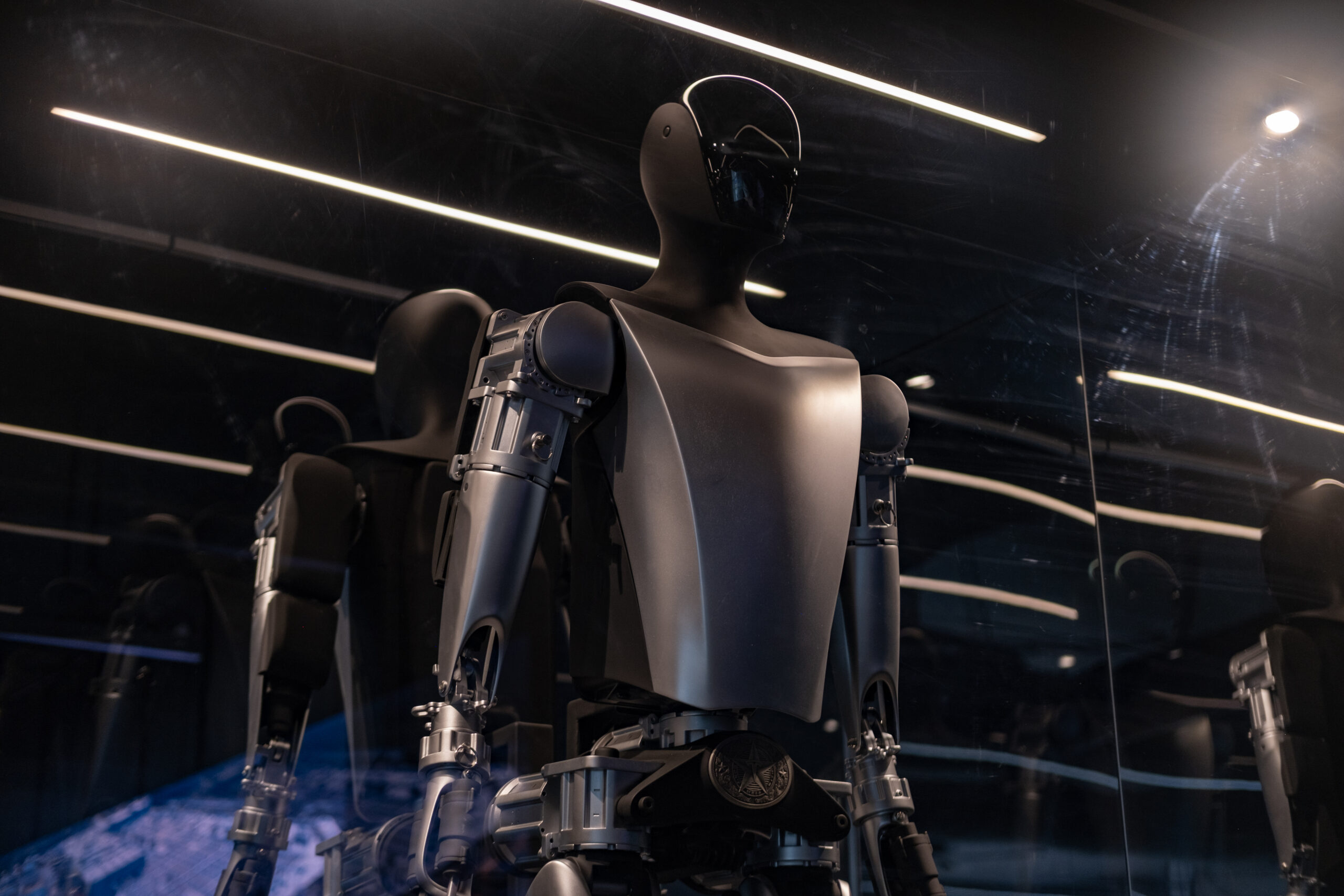Prepare to witness a groundbreaking innovation that could reshape our daily lives and industrial processes. Tesla’s second-generation Optimus humanoid robot, unveiled at the 2024 World Artificial Intelligence Conference, stands to revolutionize automation in both homes and factories. With its advanced AI capabilities and impressive dexterity, Optimus represents a significant leap forward in robotic technology. Considering the potential impact of this cutting-edge creation, it’s essential to understand its features, applications, and the challenges it faces in an increasingly competitive market. Join us as we explore the promises and implications of Tesla’s latest technological marvel.
Tesla Unveils Next-Gen Optimus Robot at AI Conference

At the 2024 World Artificial Intelligence Conference, Tesla made waves with the introduction of its second-generation Optimus humanoid robot. This advanced machine represents a significant leap forward in robotics technology, combining Tesla’s cutting-edge neural network with state-of-the-art computer vision capabilities.
Tesla’s Optimus Impressive Demonstrations
- Attendees were treated to a series of demonstrations showcasing Optimus’s remarkable agility and versatility. The robot effortlessly performed household tasks like ironing clothes and handling delicate objects, highlighting its potential to revolutionize home automation. These displays underscored the robot’s ability to adapt to various environments and execute complex tasks with precision.
Industrial Applications
- While Optimus’s household capabilities are impressive, Tesla CEO Elon Musk envisions an even broader impact in industrial settings. The robot’s advanced AI and physical dexterity could transform productivity in factories, potentially reshaping manufacturing processes across various industries. This dual-purpose design positions Optimus as a versatile solution for both consumer and industrial markets.
Market Positioning and Competition
- Tesla aims to release Optimus to the public in 2025, with an estimated price range of $25,000 to $30,000. However, the company faces stiff competition from rapidly advancing Chinese robotics technologies. As the race to dominate the humanoid robot market intensifies, Tesla’s success will likely hinge on Optimus’s unique features and the strength of its AI capabilities.
Optimus Showcases Advanced Mobility and Dexterity
Tesla’s second-generation Optimus robot is pushing the boundaries of robotic mobility and dexterity. With its cutting-edge neural network and sophisticated computer vision, Optimus demonstrates remarkable agility in performing a wide range of tasks.
Household Task Mastery
- In a jaw-dropping demonstration, Optimus effortlessly tackled common household chores. You’ll be amazed to see the robot deftly handling an iron, smoothing out wrinkles with a precision that rivals human capability. This showcases Optimus’s potential to revolutionize domestic work, freeing up valuable time for homeowners.
Object Manipulation Prowess with Tesla’s Optimus
- Optimus’s advanced gripper design and AI-powered object recognition enable it to handle a diverse array of items with ease. From delicate glassware to bulky boxes, the robot exhibits an uncanny ability to adjust its grip strength and positioning. This versatility makes Optimus an ideal candidate for both home organization tasks and industrial applications.
Fluid Movement and Balance
- Perhaps most impressive is Optimus’s fluid, human-like movement. The robot navigates complex environments with grace, maintaining perfect balance even on uneven surfaces. This level of mobility allows Optimus to seamlessly integrate into human spaces, whether it’s maneuvering through a crowded living room or traversing a busy factory floor.
Elon Musk Envisions Optimus Transforming Productivity
Optimus Revolutionizing Factory Floors
- Elon Musk, Tesla’s visionary CEO, sees the Optimus robot as a game-changer for industrial productivity. With its advanced AI capabilities and versatile design, Optimus has the potential to revolutionize manufacturing processes across various sectors. Musk envisions these humanoid robots working alongside human employees, handling repetitive tasks with precision and efficiency.
- The impact of Optimus on factory floors could be profound. By automating labor-intensive processes, companies may see significant increases in output and quality control. This could lead to faster production cycles, reduced costs, and improved overall efficiency in manufacturing operations.
Beyond Manufacturing: A Multifaceted Workforce
- Musk’s vision for Optimus extends beyond traditional factory settings. The robot’s adaptability and learning capabilities make it suitable for a wide range of industries, from healthcare to construction. In hospitals, Optimus could assist with patient care and logistics. In the construction industry, it could handle dangerous or physically demanding tasks, improving worker safety.
- As AI technology continues to advance, Musk anticipates Optimus becoming increasingly capable of complex problem-solving and decision-making. This could open up new possibilities for automation in fields previously thought to be the exclusive domain of human workers, potentially reshaping the global workforce landscape.
Optimus Faces Competition From Chinese Robotics
As Tesla’s Optimus robot prepares to enter the market, it faces stiff competition from rapidly advancing Chinese robotics technologies. While Optimus boasts impressive capabilities, several Chinese companies have made significant strides in humanoid robot development, potentially challenging Tesla’s position in this emerging field.
Leading Chinese Competitors
- Chinese tech giants like Xiaomi and Baidu have unveiled their humanoid robots, showcasing advanced AI and mobility features. Xiaomi’s CyberOne, for instance, can recognize 45 human emotions and navigate complex environments. Additionally, smaller Chinese startups are pushing boundaries in specific areas of robotics, such as dexterity and human-like movement.
Potential Market Implications
The intense competition from Chinese firms could impact Optimus’s market entry in several ways:
Accelerated innovation: The race to develop superior humanoid robots may lead to faster technological advancements.
Pricing pressure: Chinese competitors might offer more affordable alternatives, challenging Tesla’sprojected price point.
Regional market dominance: Chinese robots could gain a stronghold in the vast Asian market, potentially limiting Optimus’s global reach.
As the robotics landscape evolves, Tesla will need to leverage its unique strengths, such as its advanced AI capabilities and manufacturing expertise, to differentiate Optimus in an increasingly crowded field.
Tesla Aims for 2025 Launch of Optimus Starting at $25,000
Timeline and Pricing Strategy
- Tesla has set an ambitious target for the commercial release of its groundbreaking Optimus robot. The company is eyeing a 2025 launch, giving engineers and designers ample time to refine the technology and ensure it meets the high standards Tesla is known for. With a projected price range of $25,000 to $30,000, Optimus is positioned to be accessible to both industrial clients and affluent households.
Market Positioning and Potential Impact
- By setting the entry price at $25,000, Tesla is making a bold statement about the future of robotics. This pricing strategy could potentially disrupt the market, making advanced humanoid robots more attainable than ever before. The relatively affordable price point may accelerate adoption in various sectors, from manufacturing to healthcare and domestic services.
Challenges and Expectations
- While the 2025 launch date and competitive pricing are exciting prospects, they also present significant challenges. Tesla will need to optimize production processes, scale up manufacturing, and ensure the robots meet rigorous safety and performance standards. You can expect intense scrutiny from regulators, competitors, and consumers as Tesla works to deliver on its promises and revolutionize the field of robotics.
To Sum It Up
As Tesla’s Optimus robot prepares to enter the market, let’s closely monitor its development and potential impact. This advanced AI-powered humanoid could transform the home and workplace, offering unprecedented automation capabilities. While the price point may seem steep, consider the long-term value and productivity gains it could provide. However, remain aware of competing technologies, particularly from Chinese manufacturers, as the robotics landscape evolves rapidly. As we approach the 2025 release date, stay informed about Optimus’s capabilities, limitations, and real-world applications to determine if this groundbreaking technology aligns with your needs and vision for the future.
More Stories
Cloudera Advances Real-Time Data Innovation in AI-Driven Telecom Networks
Digital landscape evolves rapidly where the telecommunications sector is entering a transformative era driven by artificial intelligence. Cloudera plays a...
xAI Expands Grok AI Capabilities Using Oracle Cloud Infrastructure
To strengthen Grok AI capabilities, xAI—founded by Elon Musk—has partnered with Oracle to harness the power of Oracle Cloud Infrastructure.
BDx Indonesia Secures 30MVA Power Deal to Expand AI and Data Center Infrastructure
BDx Indonesia secured a 30 megavolt-ampere (MVA) power deal made with PT PLN, Indonesia’s state-owned electricity provider.
Alibaba Cloud Expands AI Infrastructure with Second South Korea Data Center
Alibaba Cloud plans to launch a second data center in South Korea by June 2025 to significantly strengthen its AI infrastructure.
Huawei CloudMatrix 384 Pushes Boundaries in AI Supercomputing
Huawei launched CloudMatrix 384, a major advancement in AI supercomputing which features 384 Ascend 910C NPUs and 192 Kunpeng CPUs.
Zoho Solo Now Optimized for iPads and Tablets
Zoho optimized its Solo platform for iPads and Android tablets, bringing powerful features to a mobile-friendly format. As a solopreneur, you can now enjoy a seamless and integrated experience.


